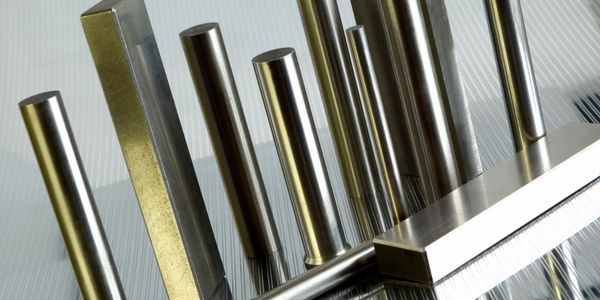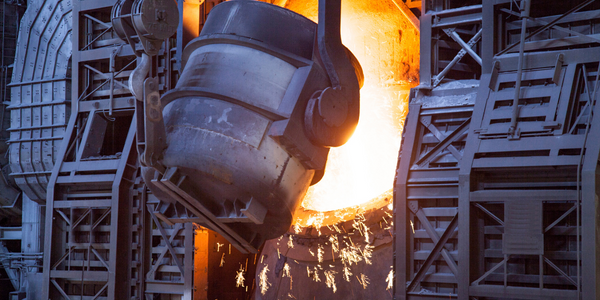Download PDF
Forging a closer relationship between maintenance and procurement
Technology Category
- Functional Applications - Enterprise Asset Management Systems (EAM)
Applicable Industries
- Metals
Applicable Functions
- Maintenance
- Procurement
Use Cases
- Asset Lifecycle Management
Services
- System Integration
The Challenge
TimkenSteel, a leading manufacturer of high-quality steel bars and seamless mechanical steel tubing, needed to ensure that its production lines are operational at all times. Effective maintenance was therefore a top priority. However, the company sought to enhance its maintenance strategy by gaining greater visibility of parts and equipment costs. The challenge was to bring corporate-wide procurement into a single system that would allow for better collaboration between the maintenance and procurement teams to analyze and control costs.
About The Customer
TimkenSteel is a leading manufacturer of high-quality steel bars and seamless mechanical steel tubing. The company's business model is unique in the industry, focusing on creating tailored products and services for its customers’ most demanding applications. Supporting some of the world’s most demanding industries and supply chains, TimkenSteel needs to ensure that its production lines are operational at all times. Effective maintenance is therefore a top priority for the company. However, the company sought to enhance its maintenance strategy by gaining greater visibility of parts and equipment costs.
The Solution
TimkenSteel decided that IBM Maximo Asset Management was the answer to the specific challenge of bringing corporate-wide procurement into a single system. The company found that the Workflow Designer capability in Maximo was extremely easy to use and configure. Moving from a business process design session to actually documenting the designs in Maximo was an almost seamless process. Critically, developing new workflows is a matter of configuration, not customization or programming – so it can be managed without specialist technical support. This new ability for managers, procurement specialists and maintenance teams to collaborate means that TimkenSteel’s entire maintenance process is better informed and more efficient.
Operational Impact
Related Case Studies.

Case Study
Goldcorp: Internet of Things Enables the Mine of the Future
Goldcorp is committed to responsible mining practices and maintaining maximum safety for its workers. At the same time, the firm is constantly exploring ways to improve the efficiency of its operations, extend the life of its assets, and control costs. Goldcorp needed technology that can maximize production efficiency by tracking all mining operations, keep employees safe with remote operations and monitoring of hazardous work areas and control production costs through better asset and site management.

Case Study
KSP Steel Decentralized Control Room
While on-site in Pavlodar, Kazakhstan, the DAQRI team of Business Development and Solutions Architecture personnel worked closely with KSP Steel’s production leadership to understand the steel production process, operational challenges, and worker pain points.

Case Study
Bluescope Steel on Path to Digitally Transform Operations and IT
Increasing competition and fluctuations in the construction market prompted BlueScope Steel to look toward digital transformation of its four businesses, including modern core applications and IT infrastructure. BlueScope needed to modernize its infrastructure and adopt new technologies to improve operations and supply chain efficiency while maintaining and updating an aging application portfolio.

Case Study
RobotStudio Case Study: Benteler Automobiltechnik
Benteler has a small pipe business area for which they produce fuel lines and coolant lines made of aluminum for Porsche and other car manufacturers. One of the problems in production was that when Benteler added new products, production had too much downtime.

Case Study
Continuous Casting Machines in a Steel Factory
With a very broad range of applications, steel is an important material and has been developed into the most extensive alloy in the engineering world. Since delivering high quality is absolutely crucial for steel plants, ensuring maximum productivity and the best quality production are the keys to competitiveness in the steel industry. Additionally, working conditions in steel factories are not suitable for workers to stay in for long periods of time, so manufactures usually adopt various machines to complete the steel production processes. However, the precision of these machines is often overestimated and the lack of flexibility also makes supervisors unable to adjust operating procedures. A renowned steel factory in Asia planned to improve its Distributed Control System (DCS) of furnaces as well as addressing the problem of insufficient accuracy. However, most well-known international equipment suppliers can not provide a satisfactory solution and local maintenance because the project needed new technologies to more accurately control equipment operations. By implementing Advantech’s automated monitoring and control solution, steel factories can not only improve the manufacturing processes but can also allow users to add additional functions to the existing system so as to make sure the operation runs at high efficiency.

Case Study
Automated Predicitive Analytics For Steel/Metals Industry
Asset to be monitored: Wire Compactor that produces Steel RebarCustomer Faced The Following Challenges:Dependent upon machine uptime.Pressure cylinders within the compactor fail to control compression and speed causing problems in binding the coil.Equipment failure occurs in the final stage of production causing the entire line to stop, can you say bottleneck?Critical asset unequipped with sensors to produce data.





